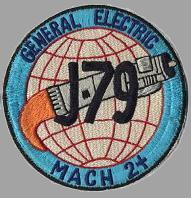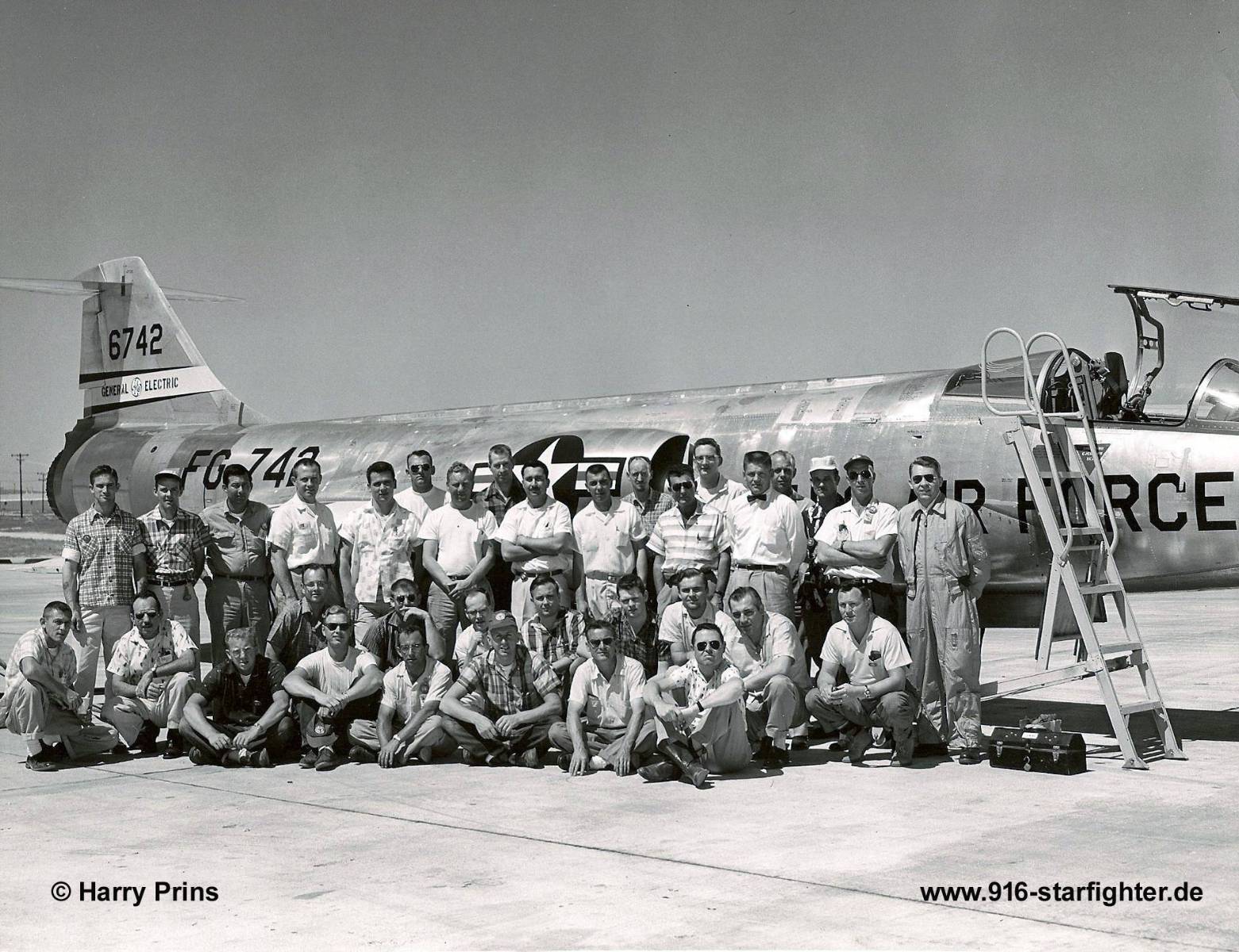

GE test crew posing in front of "6742", F-104A 56-0742 the GE test aircraft at Edwards AFB In 1952, Gerhard Neumann, a German-born US-citizen, began the development of what became one of the most successful military jet engines to enter production. The General Electric J79 was the first US single-shaft high performance axial flow turbojet, with adjustable guide vanes, a 17-stage compressor, three-stage turbine and ten can-type burners. It was developed as an outgrowth of the General Electric J-73 engine program, originally called J-73-GE-X24A, intended for reliable Mach 2 performance. The first flight of the engine was on 20. May 1955 where the engine was placed in the bomb bay of a J-47-powered B-45C (48-009). The J-79 was lowered from the bomb bay and the four J-47 were shut down leaving the B-45 flying on the single J-79. The first flight after testing was on February 17, 1956, powering the first pre-production Lockheed YF-104A Starfighter. While the engine proved highly successful in the Lockheed F-104 Starfighter and McDonnell Douglas F-4 Phantom II, the Vietnam War experience showed the disadvantages of its highly visible, smoky exhaust when used to power military aircraft. It enjoyed a production run of more than 30 years. Over 17.000 J-79s were built in the United States and under license in Belgium, Canada, Germany, Israel, Italy and Japan. The J-79 was GE's first variable-stator turbojet and first flew in 1955. 56-0742 crashed on landing approach at Edwards AFB on June 23, 1959 during a GE test flight. Aircraft was bailed to General Electric (GE) at time of the crash. copyright © Harry Prins

